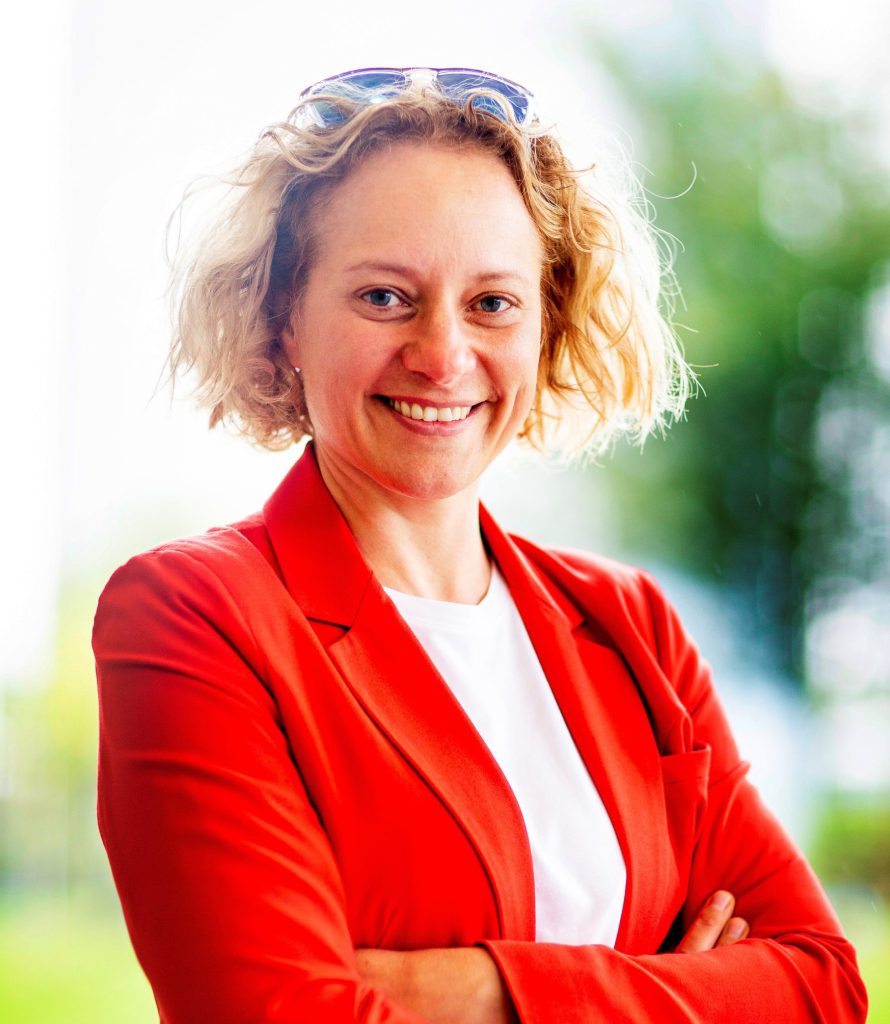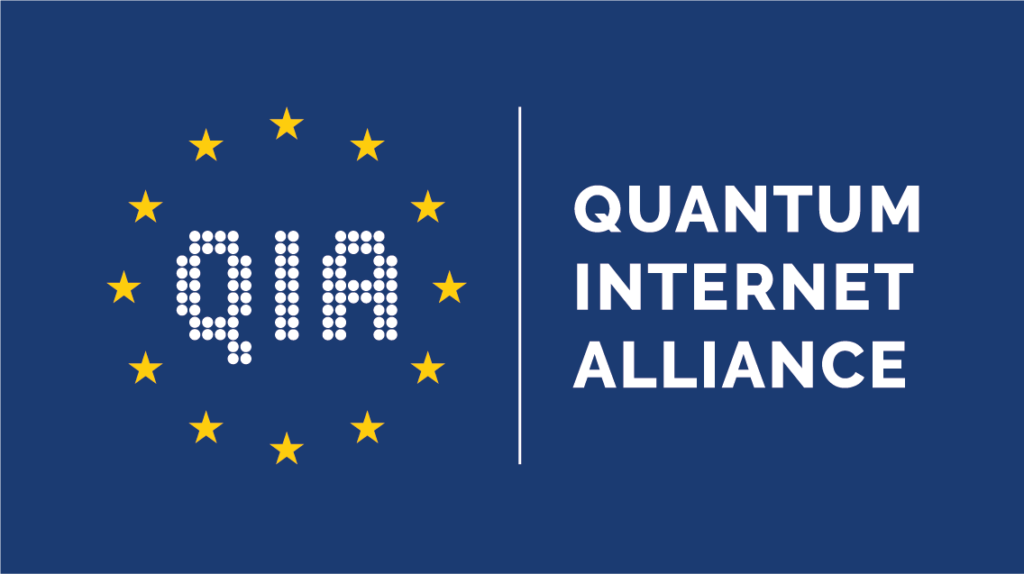Stories of Quantum
Building the quantum internet for everyone
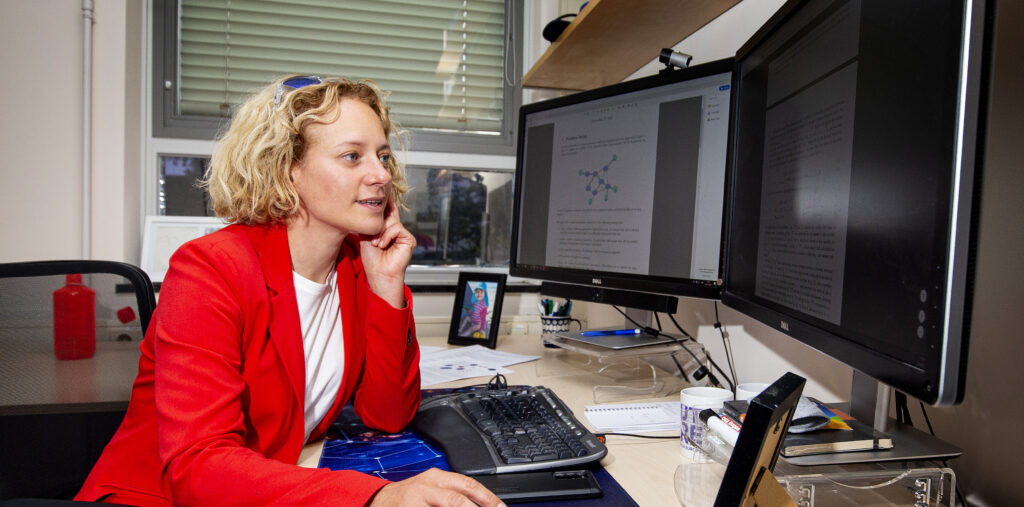
The quantum internet, once built, will bring us unbreakable encryption in daily communication, secure financial transactions, and so much more. Next to ultimate cybersecurity, it is the potential for so much more in particular that motivates Stephanie Wehner to lead the effort in creating the first prototype of the quantum internet.
Fascinated by communication in all its aspects, and particularly interested in communication over a network between users that are far apart, Stephanie Wehner accessed the internet several years before most of us had even heard of it. Not just for roaming, but also to stress test this new digital frontier. And by the end of the millennium, she had established herself as a professional (ethical) hacker, conducting network security analyses and performing penetration tests on demand.
Her interest naturally evolved into the realm of quantum communication, a subject that has captivated her for the past 20 years. ‘If you, like me, want to explore the limits of networked communication and believe that quantum mechanics describes the world, then it follows that the ultimate form of networked communication will incorporate quantum communication technologies – meaning a quantum internet.’
As a professor at TU Delft, she continues to develop fundamental quantum network and software architectures for the quantum internet. She also serves as the director of the Quantum Internet Alliance, which aims to create a prototype quantum internet by 2029. A daunting task, yet still representing only a fraction of her dream. ‘The quantum internet we are developing is not a science experiment. Eventually, I want everybody to access this kind of technology from their homes.’
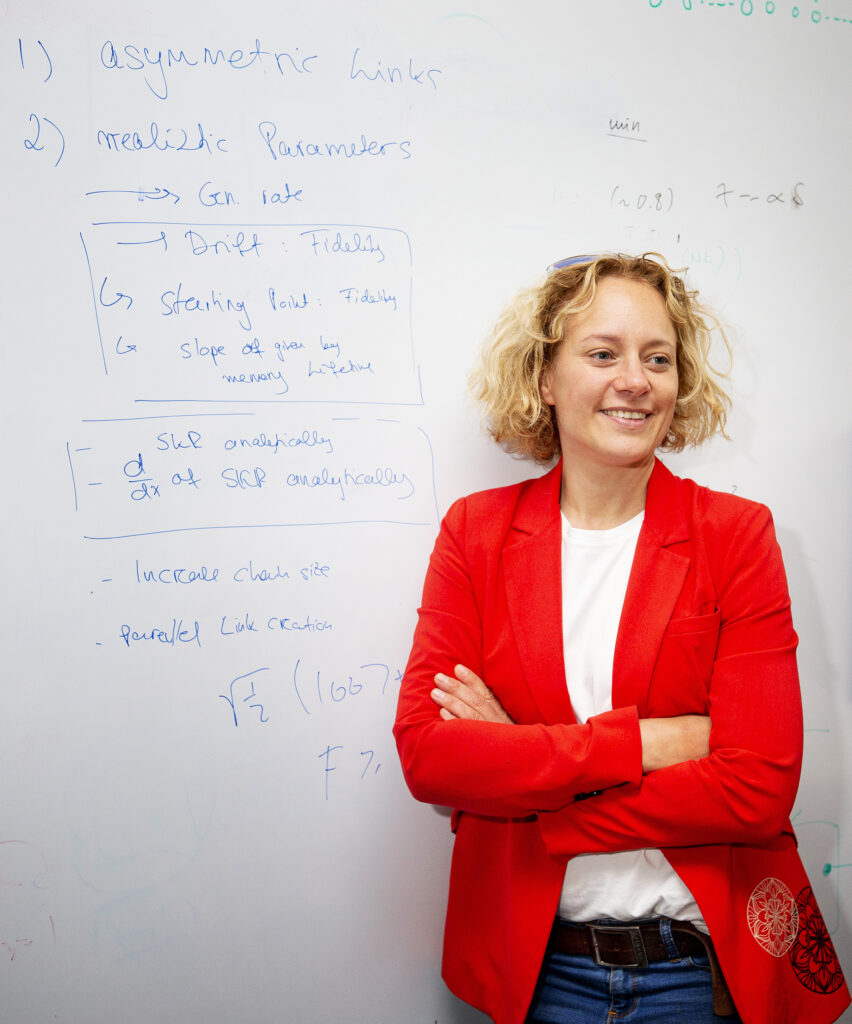
Photo credit: Guus Schoonewille for QuTech.
A quantum internet for everyone
While the quantum internet certainly features much-improved cybersecurity and enhanced privacy, Stephanie’s broader vision becomes clear when discussing potential applications. An interested layperson might think of securing point-to-point communication and financial transactions against any form of attack, including those utilizing another quantum computer. Stephanie’s example applications, however, are much more complex and involving many users from their homes.
For one, she wants to see secure delegated computation become a reality. ‘The objective here is to enable a user with only a very cheap quantum device to access a remote quantum processor securely. This means that the remote processor does not learn what the user is computing.’ An approach quite different from having our data, and inferred intentions, stored by tech-giants.
Another use case that relates closely to our everyday life involves using quantum entanglement to make networks more efficient. Take Netflix, for example; it must distribute an enormous volume of content requests across its many servers. ‘Academic examples have shown that exploiting quantum entanglement can increase the efficiency of such load balancing.’
When asked specifically about general cybersecurity applications, Stephanie provides the example of location-based identification for secure access. ‘For certain types of applications, it can be interesting to identify yourself not by a password or passkey but by your location. A quantum internet can make this possible.’ For example, this approach can improve the security of critical infrastructure control systems. Only operators physically present at control centres would be allowed to send commands to power grids, water supplies, or telecommunication networks, thereby minimizing the risk of remote hacks.
“A main driver for me in bringing the quantum internet into the world is the goal of having many people use it.”
Inflection point
For a long time, progress in quantum communication has been confined to physics laboratories, where researchers have focused on showcasing certain features such as the most efficient quantum memory or the system that establishes entanglement the fastest. It is already a significant step forward that one can now commercially purchase the technology to allow secure communication over a moderate distance of up to 100 kilometres. Building the first prototype European quantum internet with longer distances and more advanced applications, however, represents another big leap.
‘Building a quantum internet that enables secure and high-fidelity quantum communication over long distances requires a shift from a physics experiment in the lab to an engineering-driven endeavour,’ Stephanie says. ‘We don’t need the best possible components but rather a combination of components that, together, are good enough to provide something useful for the user.’ As director of the Quantum Internet Alliance, founded in 2017 and supported by the European Commission, Stephanie’s role is to bring everyone and everything together to achieve just that.
(Text continues below the blue block)
Quantum Internet Alliance
The goal is to build the first full stack quantum internet, meaning that it encompasses all layers of technology and infrastructure needed to create a functioning quantum internet. This includes the hardware layer, such as qubits and quantum repeaters; network layer technologies to allow communication over standard telecom fibres; communication protocols; and a software layer that allows users to programme applications for the quantum internet.
‘A quantum internet truly is a goal that cannot be achieved by any single research group on Earth or any organisation,’ Stephanie says. ‘It requires close collaboration between electrical engineers, material scientists, computer scientists, and experts in planning and operating the network, to name a few. There are also still some contributions needed from experimental physics.’ Then, with a smile, she adds: ‘You can imagine I spend a lot of my time talking with people.’
Early user experience
In her pursuit of realising quantum communication, Stephanie has travelled the world – from obtaining a master’s and PhD degree in Amsterdam to taking on further academic positions in California and Singapore. But it is here, at QuTech and TU Delft, where it all comes together for her. ‘In my research group at QuTech, we develop theories and software implementations that help overcome the many challenges in realising a useful quantum internet. I find it very interesting to work with people who translate our findings into quantum technology hardware, of which there are many working at QuTech. This makes TU Delft a very interesting place for me to be.’
Another appealing aspect is that QuTech developed and operates the Quantum Network Explorer, which provides users, researchers, and developers with access to both real and simulated quantum networks. It showcases the technology being built in the Quantum Internet Alliance. ‘Like all new technologies, the quantum internet has applications and implications that we cannot yet foresee,’ Stephanie says. ‘Early user experience on the Quantum Network Explorer may very well dictate whether our implementation of the quantum internet is useful. For example, we may need to design a network where a memory close to the user can buffer the entanglement and provide it immediately upon request.’
“On paper and in laboratories, quantum physics provides the ultimate in cybersecurity. Establishing security at the real-world device level, however, is an open challenge.”
A final word on security
One important thing to realise is that the “absolute security” in the context of quantum communication and quantum technology refers only to the quantum level – that of qubits. Real-world devices that create and distribute quantum entanglement bring with them all kinds of implementation issues that can compromise security. This is not specific to quantum technology, it also applies to classical cybersecurity technologies. Hackers may not be able to break current-day encryption, but if they gain access to your computer, they can potentially read the message before it is encrypted.
‘As part of this shift towards an engineering project, it is crucial to ensure that the implementation of quantum internet technology is secure,’ Stephanie says. ‘From my perspective as a former ethical hacker with very high standards for security, it is not yet fully understood what can be attacked and what a completely secure implementation of the quantum internet will look like. However, I am confident that this will be resolved in due time.’
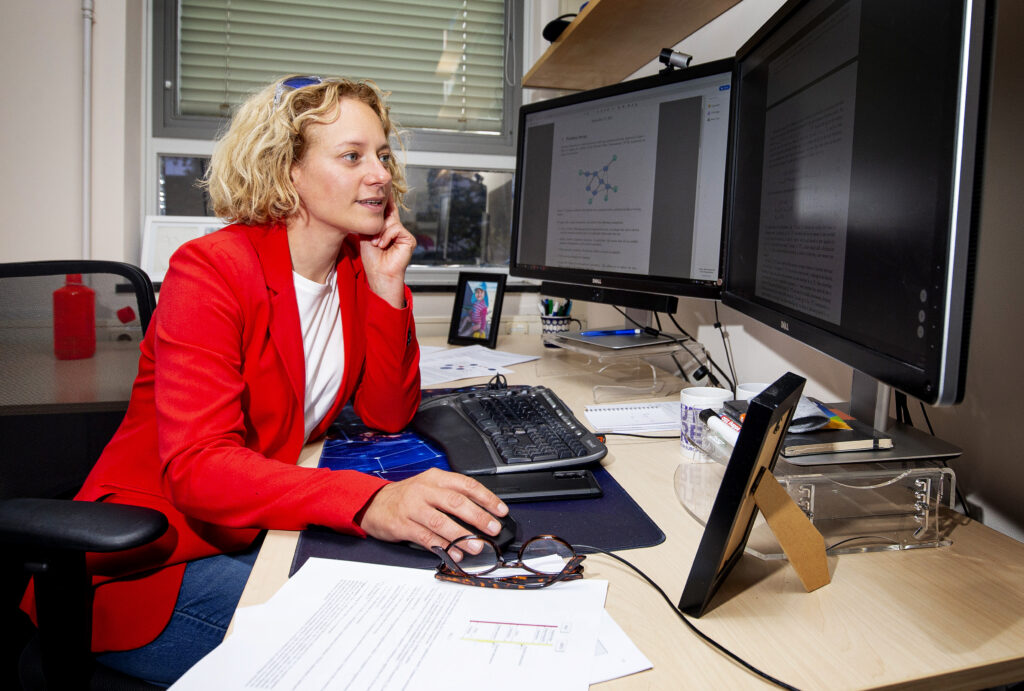
Stephanie Wehner working in her office. Photo credit: Guus Schoonewille for QuTech.
Into the future
With that in mind, it is quite an understatement to describe Stephanie as eager to see the first prototype quantum internet come online, and to have it evolve into the myriad applications and multi-user (home) technology she envisions. While it is unlikely to provide a significantly improved method for ordering an Uber taxi, the Netflix use case demonstrates that it can certainly have something in store for everyone. Whatever it may become, with Stephanie as a driving force the quantum internet will not only provide the ultimate in cybersecurity, but also become more intertwined with your everyday life than you ever imagined prior to reading this article. ‘I can’t wait to see that happen.’
Learn more about Stephanie in this Ammodo Docs documentary
Moonshot Mission: Stephanie Wehner on the development of quantum internet
In 1969 the first message was successfully sent on the internet, heralding a revolution in communication technology. Today, we are on the eve of a new revolution: that of the quantum internet, a fundamentally new way of communicating which relies on the laws of quantum mechanics and is inherently secure, inherently stable and incredibly efficient. This paves the way for applications that haven’t even been thought of yet. Quantum scientist and former hacker Stephanie Wehner is on a mission to develop the first operational quantum internet network before 2030. A daunting task, which some would even call crazy, but Wehner believes she can do it – not only by writing scientific articles, but simply by building it.

